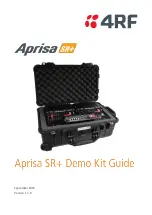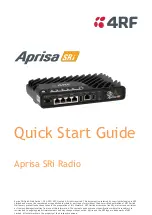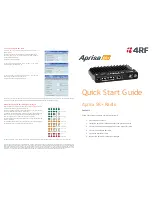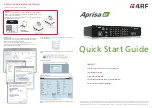
INSTALLATION MANUAL
89000007
Page 2-10
15 Nov 2013
© Honeywell International Inc. Do not copy without express permission of Honeywell.
2.6.3 Mutual
Suppression
Mutual suppression allows two or more transmitters on adjacent frequencies
to inhibit the other transmitters when one is active to limit the interference
effects. It is commonly used between transponders and DME systems, and
between transponders and collision avoidance systems.
The KT 74 provides two styles of mutual suppression interface on the 24-way
connector. The suppress input on contact 9 is typically used in aircraft with
simple DME systems and no other suppression requirements. It is an input
only, and is active whenever the input is greater than approximately 5 volts.
The suppress I/O on contact 4 is an ARINC compatible suppression bus
interface, which acts as both an input and an output. The KT 74 will assert
this signal when it is transmitting, and can be suppressed by other equipment
that asserts the signal. The KT 74 will drive approximately 24 volts on the
output (independently of supply voltage), and will treat the input as active
whenever the bus has greater than 10 volts.
2.6.4 Altitude Inputs and Output
The KT 74 can use either a Gillham code altitude input, or serial RS232
altitude input. The parallel input is on the 24-way primary connector, the
serial input is on the 12-way secondary connector. If the altitude encoder you
are using offers both, we recommend using the RS232 serial input. Serial
formats allow a higher resolution altitude representation that can be used by
Mode S interrogations, whereas Gillham code format can only represent
altitude to the nearest 100 feet (30.5 m). You must choose between serial or
parallel formats – you should not connect both. If a parallel encoder is
connected the KT 74 will always use that as the altitude source even if a
serial encoder is also connected.
The parallel encoder inputs are active when the voltage to ground is pulled
below approximately 4 volts. The KT 74 includes internal isolation diodes
which prevent the unit from pulling the encoder lines to ground when the
transponder is switched off. The KT 74 can therefore share the altitude inputs
with other devices without needing external isolation.
Parallel output altitude encoders intended for operation below 30,000 feet
(9.144 Km) may not have a signal connection for D4. In an aircraft with a
service ceiling below 30,000 feet (9.144 Km) input D4 will never be active,
and can safely be left unconnected.
The serial encoder input uses RS232 input levels. The communication should
be 9,600 bps, no parity. The KT 74 will correctly recognize either
“Icarus/Trimble/Garmin” format altitude data, or “RMS” format altitude data.
Refer to the encoder documentation to determine jumper settings as
appropriate.
The KT 74 can also accept Shadin family Format G, Format S, and Format Z
air data protocols which supply both altitude and airspeed information. The
airspeed information can be used to provide an automatic air/ground
determination for an ADS-B installation.
















































